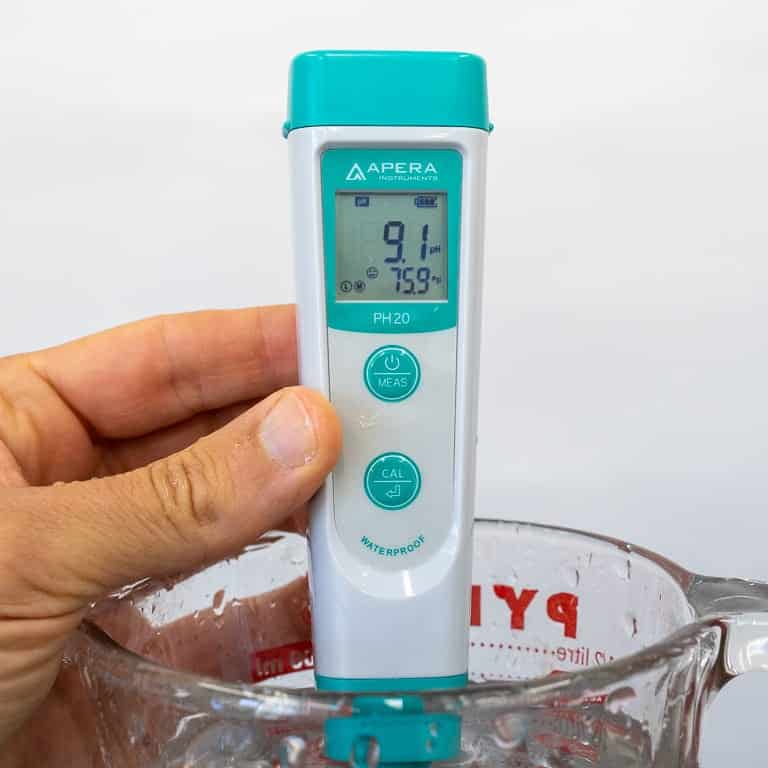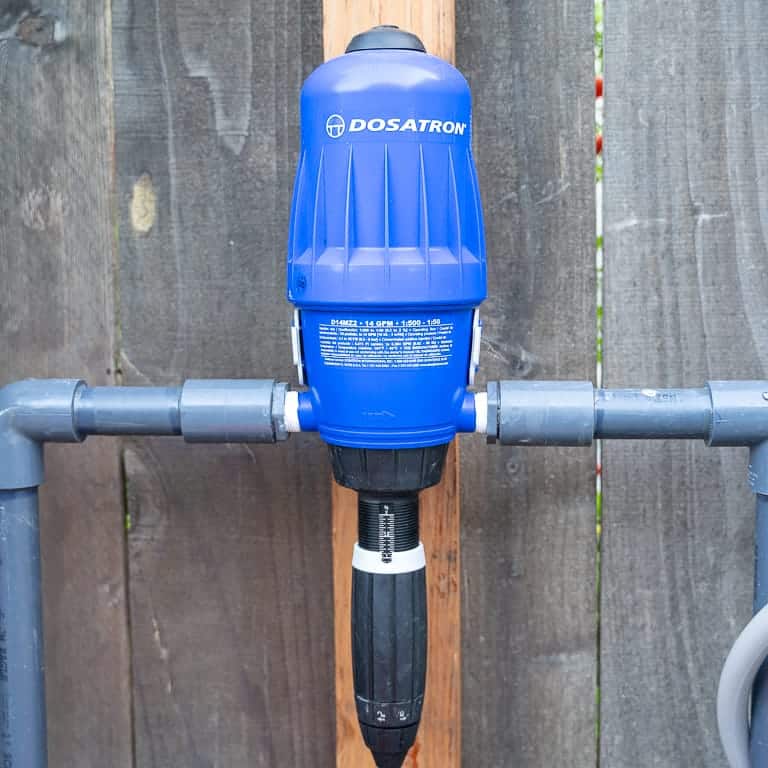I found out that the pH of my water can get pretty high a long time ago. It’s not too bad when it’s in the lower ranges, but it definitely needs attention when it creeps into the higher ranges – which it did this summer.
pH is a measure of how acidic or basic water is. Because it can change from season to season and from year to year, I have to monitor it on a regular basis and treat the water when it gets too far out of whack.
Generally speaking, bonsai prefer slightly acidic water (pH below 7.0). Municipal water is commonly basic (pH above 7.0). The higher the pH, the harder it is to keep bonsai healthy.
There’s no perfect pH for irrigation water as the optimal pH for a given nutrient is different from one nutrient to the next.
As noted in the last post, the fertilizers we use can affect the pH and help keep our trees green. The same is true for many bonsai soils as both akadama and kanuma have some ability to minimize the effect of basic (or acidic) water on our trees.
Soil and fertilizer, however, can only do so much. Which brings us to the first step for making improvements: getting an accurate measure of the water’s pH.
The most common ways to measure pH are with a freshwater test kit, test strips, or a pH meter. Paper test strips are easy to use but not very accurate so I don’t recommend them for testing irrigation systems. Both freshwater test kits and pH meters make it easy to get an accurate reading.

A pH meter showing the pH and the water temperature
Depending on how high your pH is and how much trouble you have keeping your bonsai healthy, it might be time to make a change. Here are some basic options for growers with high pH water.
- Collect rainwater. Rainwater is commonly more acidic than municipal or well water and can be a great option for watering bonsai.
- Add vinegar (or other acids) to the water in your watering can. This approach is good for smaller collections but doesn’t work as well when you have lots of trees.
- Use a siphon mixer. A siphon system like the Hozon Brass Siphon Mixer can draw an acidic solution from a reservoir (a 5-gallon bucket can work) and automatically mix it with the water coming from the spigot. This is the most simple and cost effective approach to acidifying your water. (For details about this approach, see Michael Hagedorn’s post on the topic here and check out the results a friend of his achieved here.)
- Use an injection system. Injection systems like the Dosatron use a pump mechanism to add a precise amount of acid (or fertilizer) to your water. These systems are more expensive and require more set-up than the above approaches but offer accuracy and flexibility. (A big, and seriously delayed, thank you to Matthiew Quinn of Montréal for suggesting I get one back in 2013 – thanks Matthiew!)
- Use a reverse osmosis system. Reverse osmosis or “RO” systems take a brute force approach to purifying water. They can be great when water quality is low but aren’t the best approach when the only issue is high pH.

Dosatron fertilizer injector
With the exception of reverse osmosis systems, the above options are fairly straightforward to set up. The main thing is to choose an approach that works for your garden and to test regularly to ensure the system is doing what you expect it to.
The next step is to select an acid to add to the water. The most common choices are acetic acid (vinegar), citric acid, phosphoric acid, muriatic acid (aka hydrochloric acid), nitric acid, and sulfuric acid. Products like pH Down use both phosphoric and citric acid; muriatic acid can be found in home centers alongside other solvents and cleaners.
I have yet to try all of the different acids but I have become a fan of using acetic acid. 30% vinegar is easily available and makes a good starting point for acidifying water. Were I to try another acid I’d try citric acid which is commonly available in powder form. All acids should be treated with caution and handled with care – and adequate safety equipment.
My plan is to add either fertilizer or acid to my water every time I water my trees. My goal in doing this is to see how healthy I can get my trees before winter to help them grow better next spring. Will report back on the results.
Subscribe to Indian Bonsai Art
New Posts Delivered Every Tuesday and Friday
